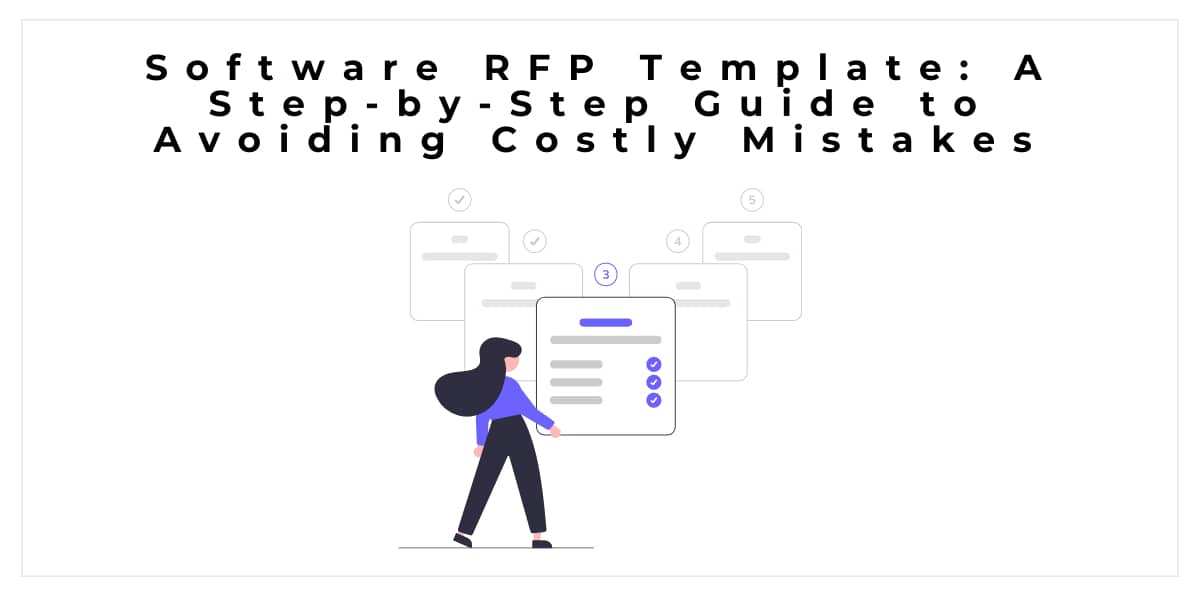Introduction
A software RFP template is a document that helps you to create a request for a proposal for software development or customization. It is a critical tool for ensuring that you get the best possible software solution for your needs, at a fair price.
Step 1: Define your requirements
The first step is to clearly define your requirements. What do you need the software to do? What are your must-have features and functionality? What are your nice-to-have features?
It is important to be as specific as possible when defining your requirements. This will help you to get accurate quotes from potential software vendors.
Step 2: Do your research
Once you have defined your requirements, it is time to do your research. Identify a list of potential software vendors. Look at their websites, read reviews, and talk to other businesses who have used their services.
Once you have narrowed down your list of potential vendors, you can start to contact them for more information.
Step 3: Create a timeline
It is important to have a realistic timeline for your software development project. This will help you to budget for the project and to avoid delays.
Be sure to factor in time for the RFP process, the development process, and the testing process.
Step 4: Draft your RFP template
Now it is time to start drafting your RFP template. Be sure to include the following sections:
- Introduction: This section should provide a brief overview of your company and your project.
- Requirements: This section should list all of your requirements for the software solution.
- Timeline: This section should outline your timeline for the project.
- Budget: This section should provide an estimated budget for the project.
- Evaluation criteria: This section should outline the criteria that you will use to evaluate the proposals from potential vendors.
Step 5: Review and finalize your RFP template
Once you have drafted your RFP template, be sure to review it carefully. Ask other people to review it as well.
Make sure that your RFP template is clear, concise, and easy to understand.
Step 6: Distribute your RFP template
Once you have finalized your RFP template, you can start to distribute it to potential vendors. Be sure to give them enough time to submit their proposals.
Step 7: Evaluate the proposals
Once you have received the proposals from potential vendors, you need to carefully evaluate them. Consider the following factors:
- Price: How much does the vendor charge for their services?
- Features and functionality: Does the vendor offer all of the features and functionality that you need?
- Experience: Does the vendor have experience in developing software for businesses like yours?
- References: Can the vendor provide references from other businesses that they have worked with?
Step 8: Select a vendor
Once you have evaluated the proposals, you can select a vendor to develop your software solution. Be sure to negotiate a contract that outlines the scope of work, the timeline, and the budget for the project.
Unique insights for IT specialists
IT specialists can play a valuable role in helping businesses to create and manage RFP templates for software development projects.
Here are some unique insights for IT specialists:
- IT specialists can help businesses to define their requirements for the software solution.
- IT specialists can help businesses to identify potential software vendors.
- IT specialists can help businesses to create a realistic timeline for the project.
- IT specialists can help businesses to review and finalize their RFP templates.
- IT specialists can help businesses to evaluate the proposals from potential vendors.
- IT specialists can help businesses to select a vendor and to negotiate a contract.
By following these steps, IT specialists can help businesses to avoid costly mistakes when developing software solutions.
Conclusion
Creating a software RFP template can be challenging, but it is an essential step in getting the best possible software solution for your needs. By following the steps outlined in this article, you can avoid costly mistakes and ensure that your project is a success.
Additional insights
In addition to the steps outlined in this article, there are a few other things to keep in mind when creating a RFP template for software:
- Be flexible. It is important to be prepared to negotiate with potential vendors.
- Get everything in writing. Once you have selected a vendor, be sure to get everything in writing, including the scope of work, the timeline, and the budget.
- Don't be afraid to ask for help. If you are not sure how to create a software RFP template, there are many resources available, including online templates and consulting services.
By following these tips, you can increase your chances of success when developing a software solution for your business.








